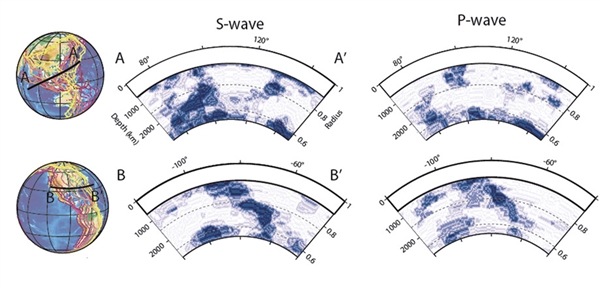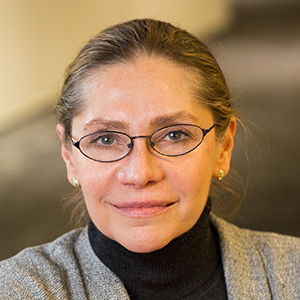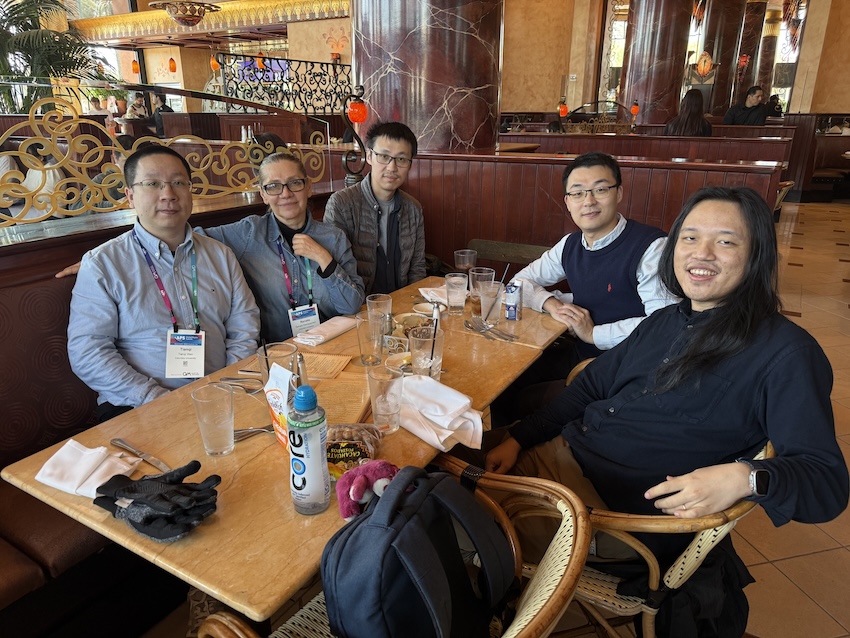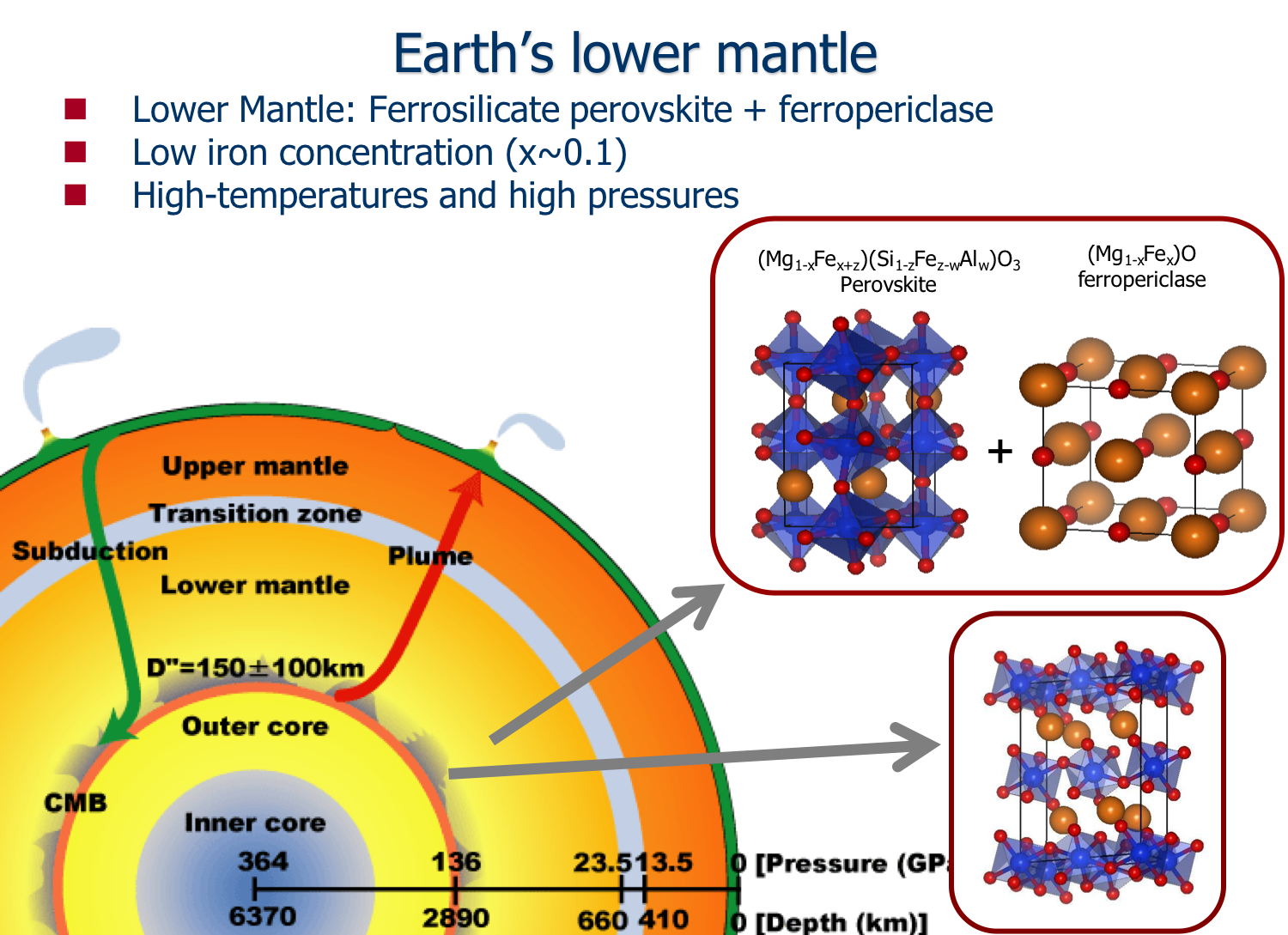Latest Highlights
press
Research Highlight: FeO at Earth's core conditions described by a standard density functional
on July 5, 2023
Press Highlights
FeO at Earth’s core conditions described by a standard density functional by Renata Wentzcovitch
What is it about?
FeO is a compound of great interest in condensed matter physics and geophysics. It has complex and subtle structural, magnetic, and electronic transitions. It has been challenging for theoretical/computational methods to address such property changes in a prototypical, strongly correlated material such as FeO. This paper shows that the fundamental properties of FeO can be described successfully at high pressures and temperatures by a standard density-functional-based method once its dynamic complexity and electronic excitations are addressed simultaneously.
Why is it important?
This work establishes the theoretical framework to predict the properties of iron alloys at the extreme thermodynamic conditions of the Earth’s core, an enigmatic planet region. This framework should be a starting point for investigating the properties of other alleged strongly correlated materials at more normal thermodynamic conditions.
Perspectives
Several theoretical/computational methods needed to be developed to address diverse challenges before a full-scale simulation of this complex material could be performed successfully under such extreme pressure and temperature conditions. The authors used a novel combination of approaches and methods developed in-house to perform these simulations. – Renata Wentzcovitch
press
Research Highlight: Probing the Quantum Earth
on May 15, 2023
 |
Photonics Focus Magazine Vol. 4 Issue 3 Probing the quantum Earth |
A quantum phase transition called spin crossover can be used to visualize deep-Earth processes like subducting tectonic plates. Photo credit: Nature Communications

Shephard, G.E., Houser, C.,et al., Wentzcovitch, R.M., Seismological expression of the iron spin crossover in ferropericlase in the Earth’s lower mantle. Nat Commun 12, 5905 (2021). https://doi.org/10.1038/s41467-021-26115-z
Click to preview the magazine PDF.
press
Research Highlight: Iron Is at the Core of This Earth Science Debate
on March 20, 2023
A new study investigates iron’s form at the planet’s interior. The findings have repercussions for understanding the inner core’s structure.

Y. Sun, M. I. Mendelev, F. Zhang, Z. Liu, B. Da, C.-Z Wang, R. M. Wentzcovitch, and K.-M. Ho. Geophys. Res. Lett. (2023). https://doi.org/10.1029/2022GL102447
Press Highlights
Iron Is at the Core of This Earth Science Debate by Aaron Sidder, EOS
Earth’s inner core is dominated by iron, which can exist as a solid material in more than one crystallographic form. (This quality allows iron to combine with other elements to form alloys.) Iron’s most stable form at room temperature is the body-centered cubic (bcc) structure. At extremely high pressures, it is stable in its hexagonal close-packed (hcp) phase. Of considerable debate, however, is iron’s structure at the center of Earth. In a new study, Sun et al. get one step closer to an answer.
Latest News
news
Wentzcovitch wins the Bridgman Award
on July 18, 2025
Renata Wentzcovitch has been named the recipient of the 2025 Bridgman Award, a distinguished honor presented by the International Association for the Advancement of High Pressure Science and Technology (AIRAPT). This prestigious award, given every two years, recognizes outstanding research achievements in the physics, chemistry, and technology of high-pressure science.
Wentzcovitch, Professor of Materials Science and Applied Physics and Professor of Earth and Environmental Science at Columbia Engineering, is the first woman ever to receive the Bridgman Award since its inception.
She was selected by AIRAPT in recognition of her transformative contributions to materials simulations at high pressures and temperatures. In the nomination letter, her development of key computational methods that have become essential tools in the field was highlighted:
“Her work represents a new chapter in high-pressure research with the development of the first principles variable cell shape molecular dynamics methods. The impact of her methods was immense, and it was especially valuable for investigating minerals with complex crystal structures at extreme conditions. She has developed a version of this approach that allowed the determination and discovery of complex equilibrium structures at arbitrary pressures. She also pioneered high-temperature quasiharmonic calculations, which opened the door to studying materials at planetary interior conditions. Her contributions make her an internationally recognized leader in materials simulations at extreme conditions.”
Professor Wentzcovitch will officially receive the award, a gold medal, at the 29th AIRAPT Meeting in Matsuyama, Japan. As part of the honor, she will also deliver the Bridgman Lecture, named after Nobel laureate Percy W. Bridgman, a pioneer in high-pressure physics.
This milestone not only recognizes a stellar scientific career but also marks a historic moment for representation in high-pressure science.
Link to news on APAM: Wentzcovitch wins the Bridgman Award.















